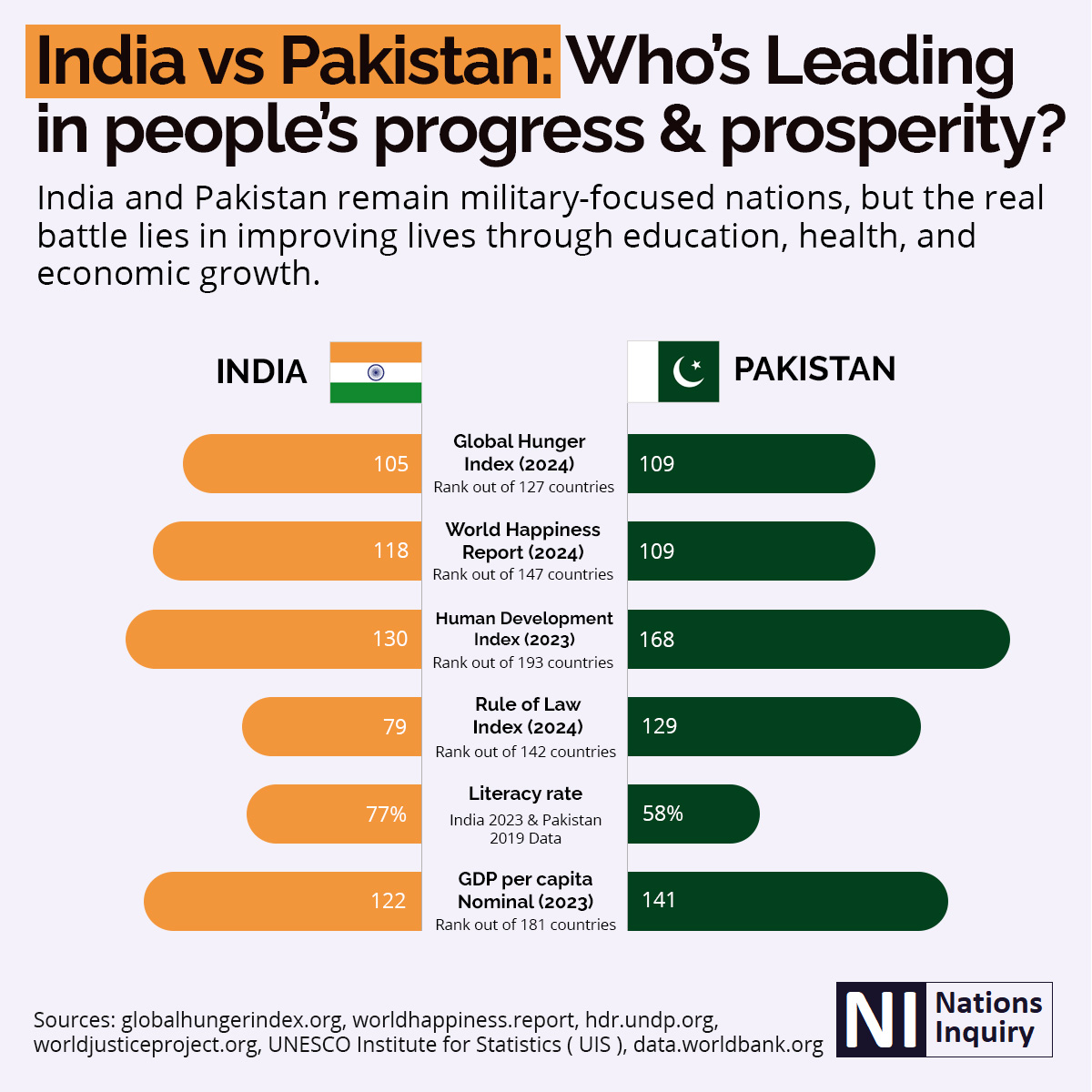India and Pakistan, despite their unique identities and paths, have both faced the consequences of oppressive systems in various forms. In both countries, large sections of the population still struggle with poor education, economic inequality, and ideological divisions—issues that continue to weaken their societies from within. Whether it is the manipulation of the education system, the widening gap between rich and poor, or the rise of communal and political polarization, these tools serve the interests of a few while keeping the majority disempowered. The future of both nations depends on how successfully their youth can overcome these challenges through awareness, unity, and meaningful reform.

The Three Weapons of an Oppressive System: Ignorance, Economic Hardship, and Intellectual Division
Throughout history, oppressive systems have always tried to keep people weak and helpless in order to protect their own interests. To achieve this, they use powerful tools that not only stop a nation from progressing but also keep people unaware of their basic rights. The three most dangerous tools used are: spreading ignorance, creating economic hardship, and promoting confusion and division in thought. Together, these tools trap people in a deep pit from which it becomes very hard to escape.
In this article, we’ll look at how each of these tools works.
1. Keeping the Nation Ignorant
The first and most important goal of any oppressive system is to keep people away from education. Education is the real power that helps individuals understand their rights and gives them the courage to speak out against injustice. An educated nation stands up for its rights and challenges corrupt systems. But a nation without education remains unaware of its exploitation and becomes an easy target for the oppressors.
Weak Education Systems
To maintain control, oppressive powers weaken educational institutions, lower the quality of education, and design school curricula in a way that keeps people away from real knowledge. The goal is to keep minds limited and stop people from thinking deeply about their conditions. Even the so-called “educated” group in such a system often lacks real awareness. They end up focusing on surface-level issues and avoid discussing the root problems of society.
2. Creating Economic Hardship
The second major weapon is to make people financially weak. Oppressive systems create unfair economic policies and concentrate wealth and resources in the hands of a few powerful individuals. This results in poverty and helplessness for the common people. Often, people are trapped in a cycle of loans and debts that turns them into lifelong dependents.
The Impact of Economic Struggles
When people are struggling financially, they neither have the time nor the resources to fight for their rights. They become so busy trying to meet basic needs that they lose the ability to focus on larger social or political issues. Economic hardship doesn’t just affect the body—it damages people’s mental and emotional strength as well.
3. Spreading Confusion and Division
The third and perhaps most effective strategy is to divide people intellectually and ideologically. This means spreading religious, social, political, and cultural differences to keep people fighting among themselves—so they don’t unite against their real oppressor.
The Damage of Mental Division
Oppressive systems use media, schools, and other platforms to create hate and distrust among different groups. They turn communities against each other, making people forget who the real enemy is. As a result, the nation wastes its energy in internal conflicts and loses the ability to stand united against injustice.
